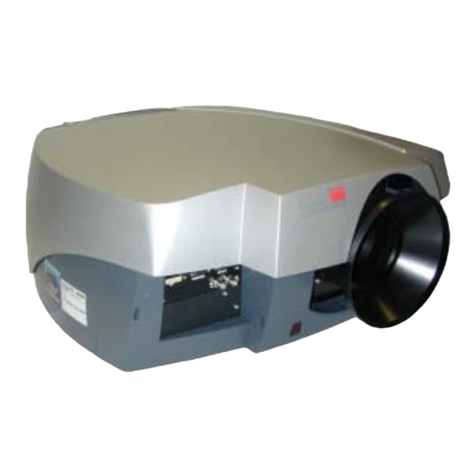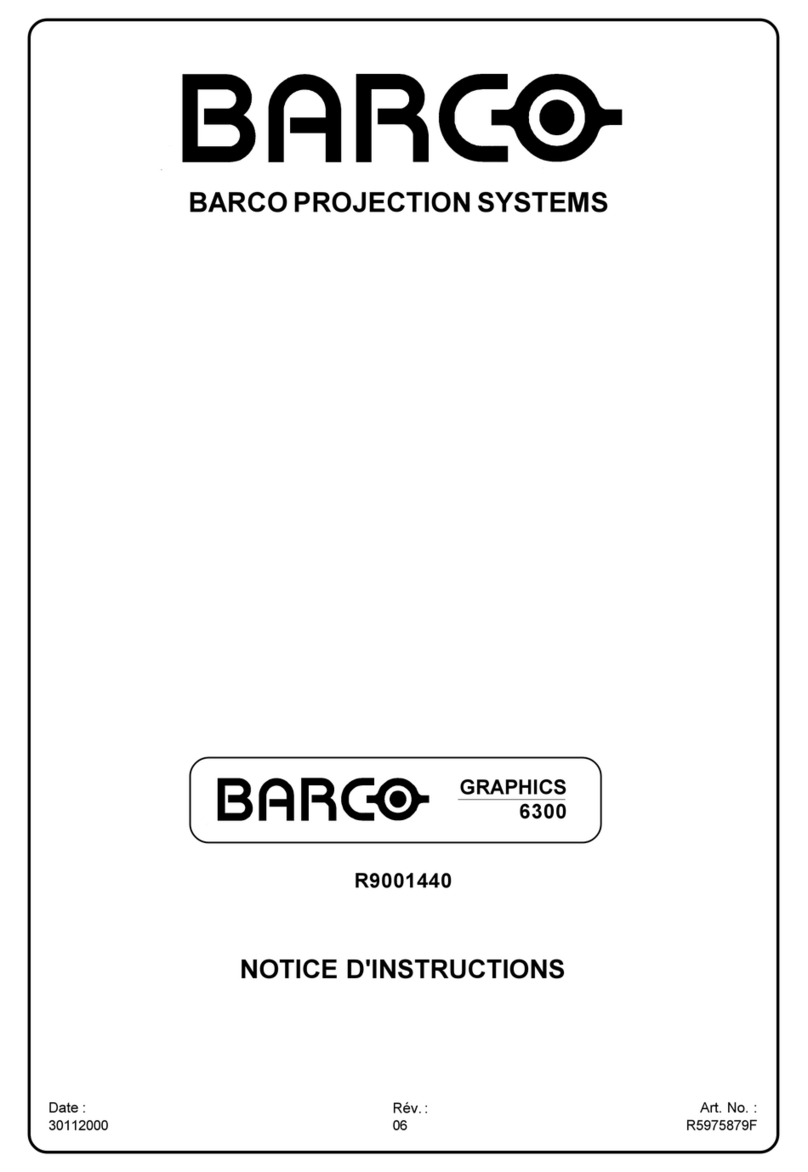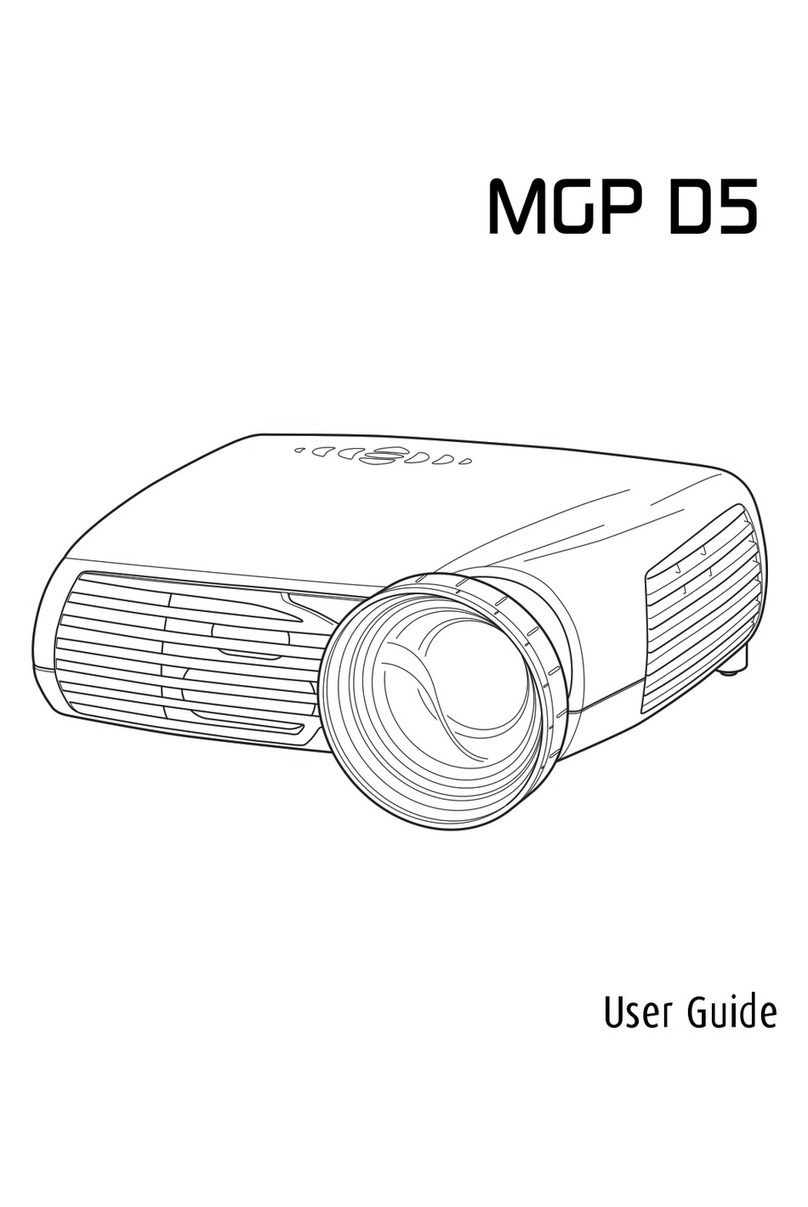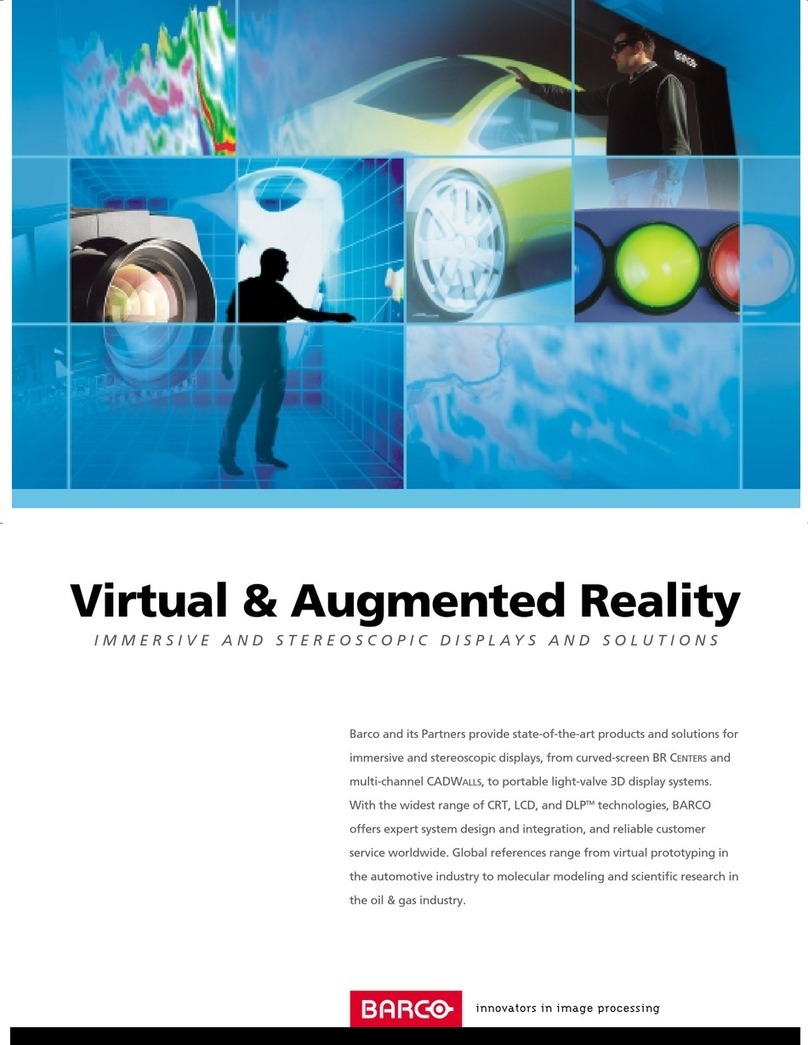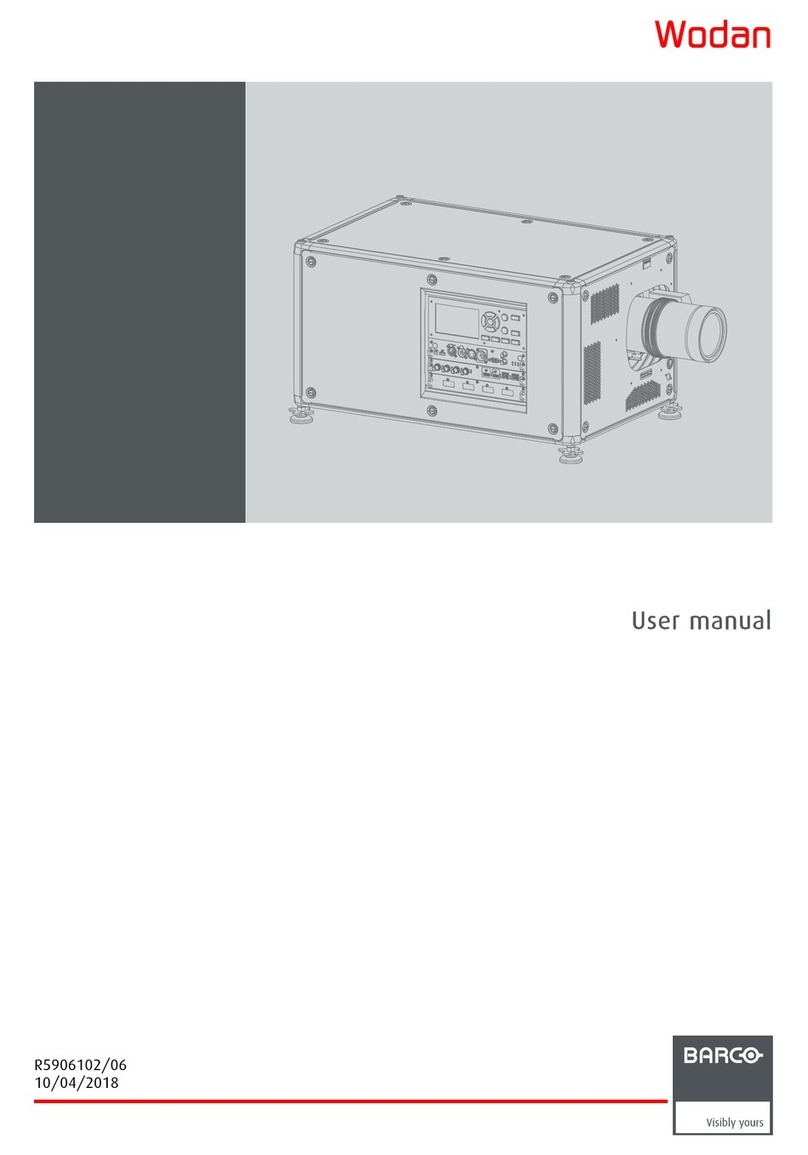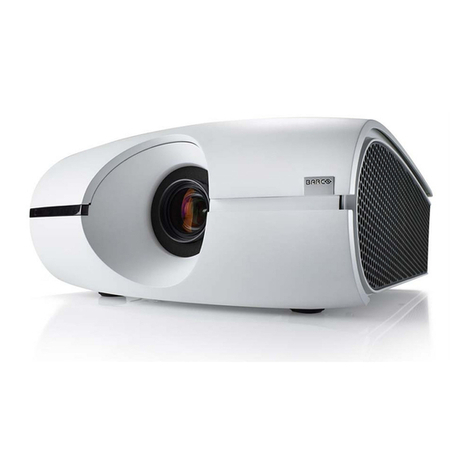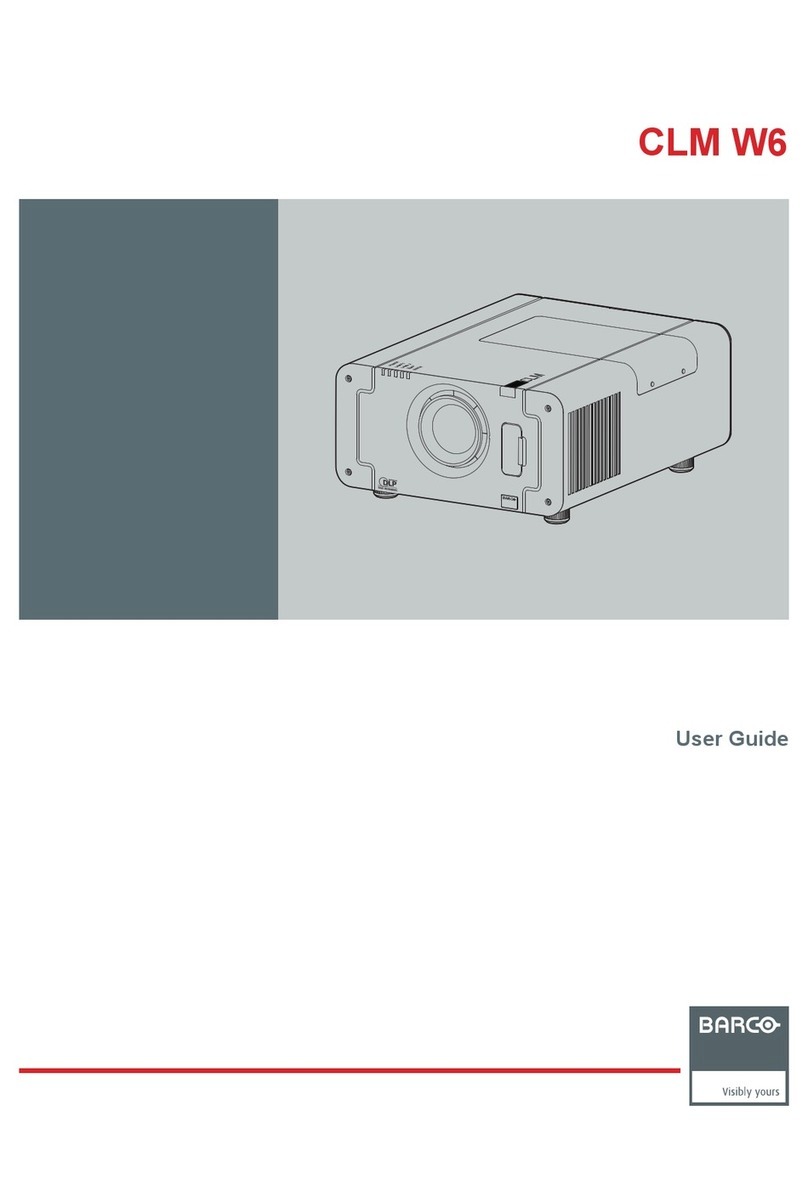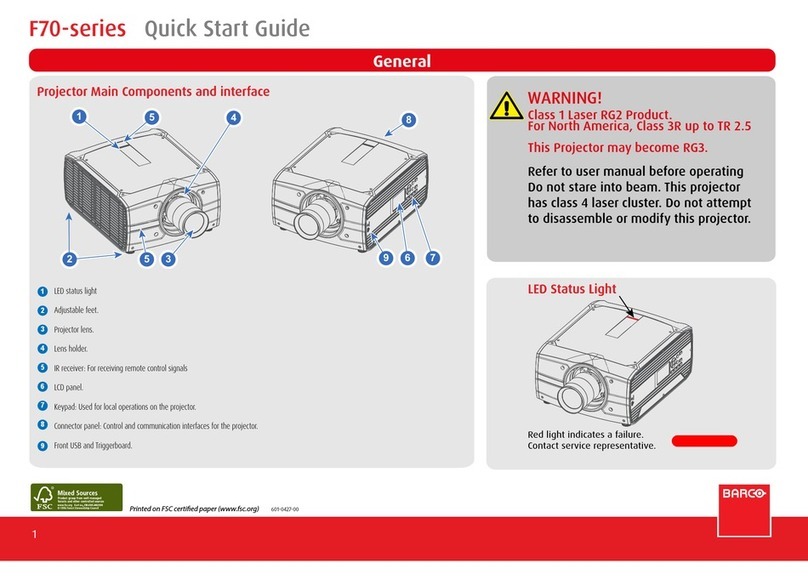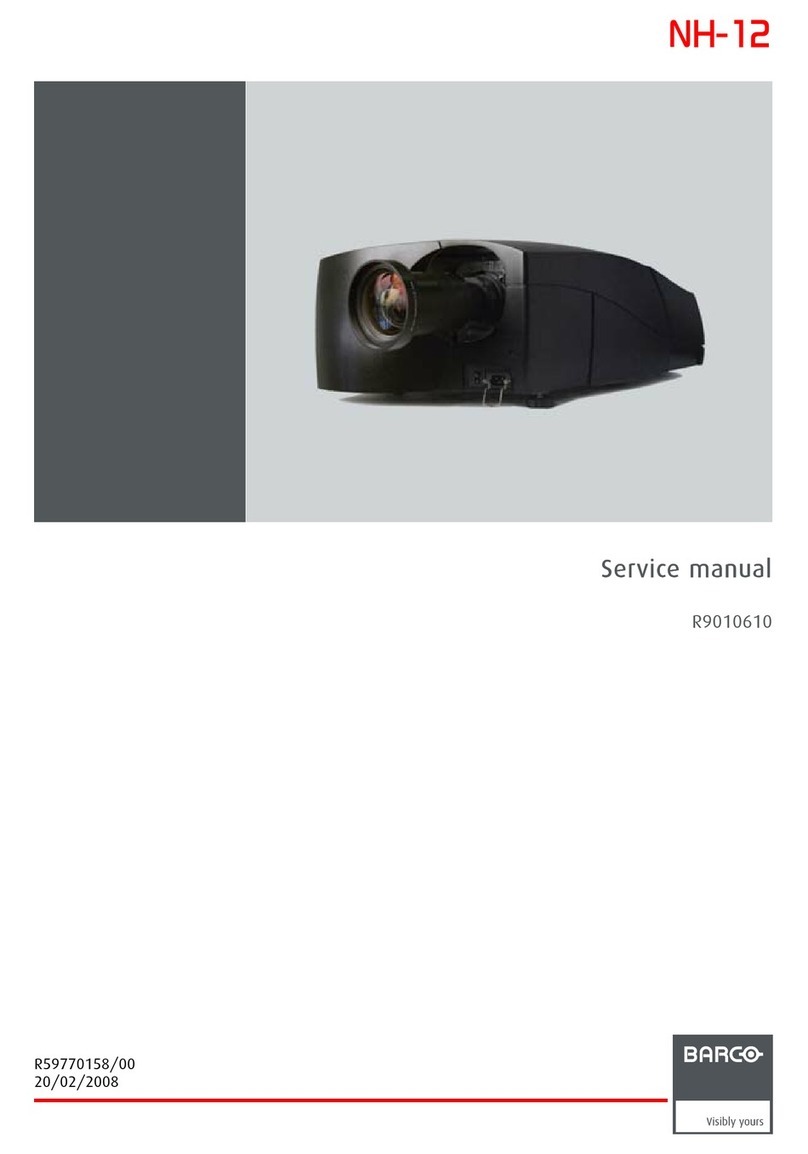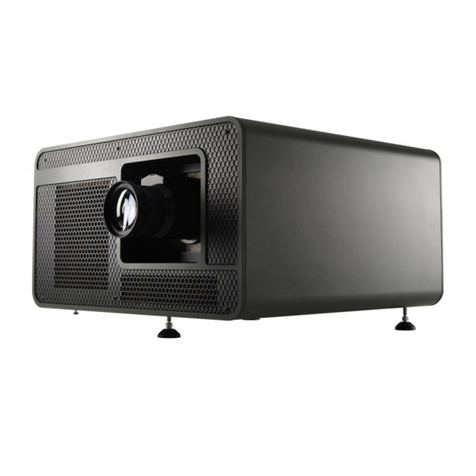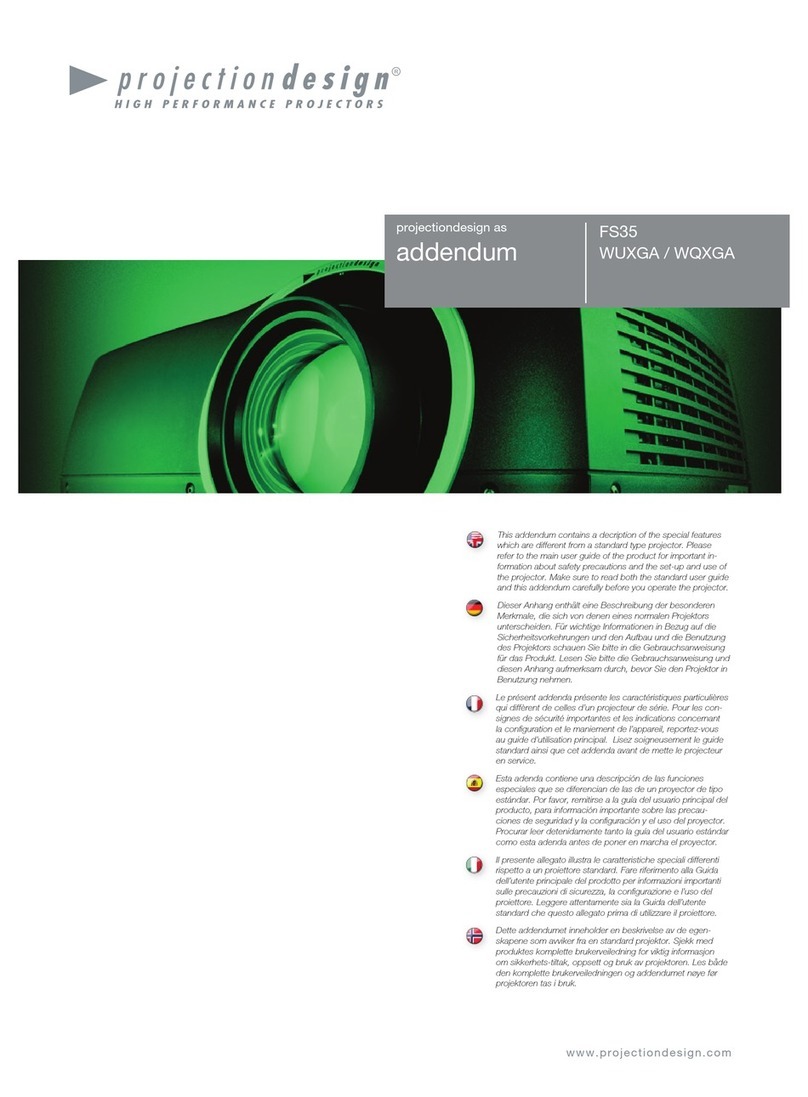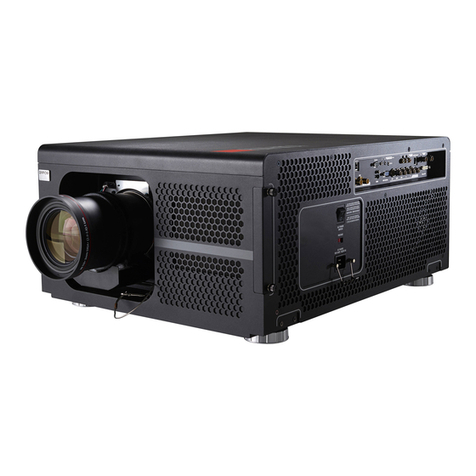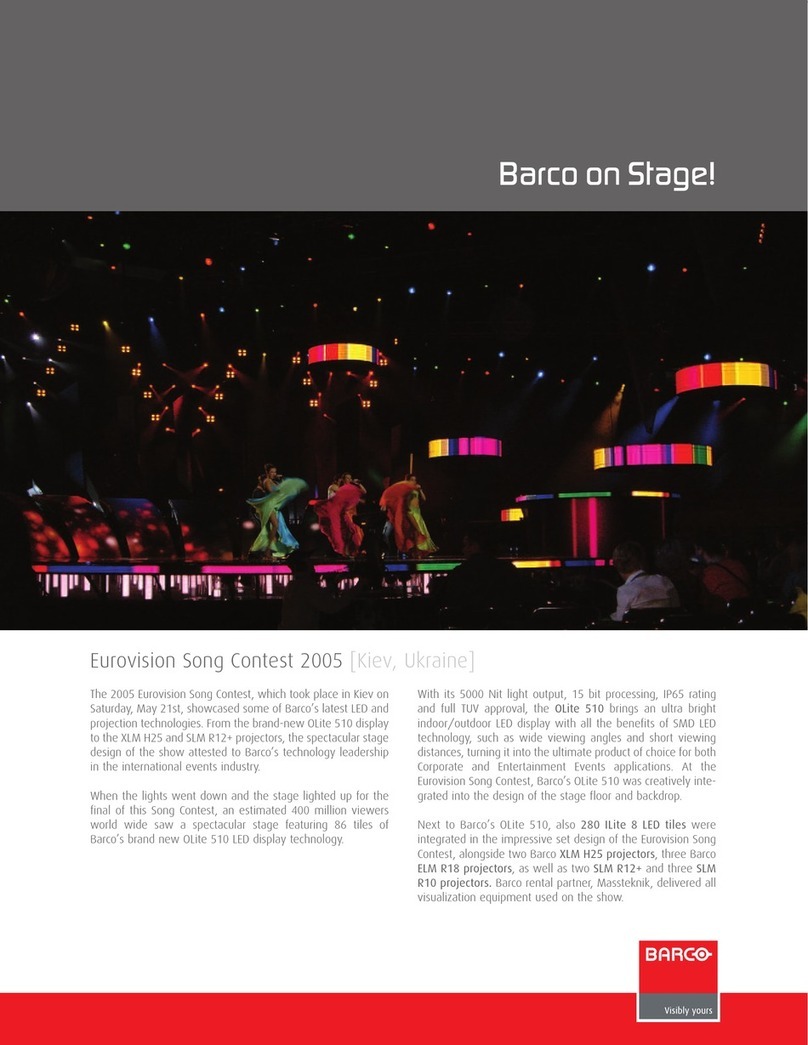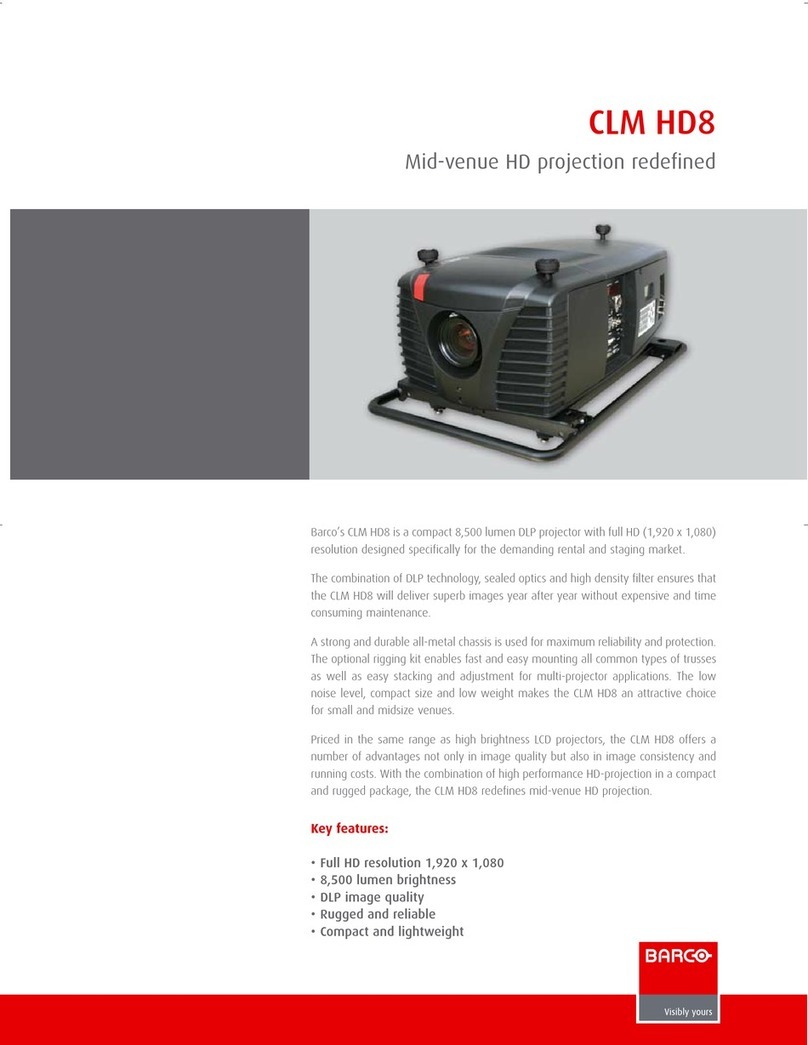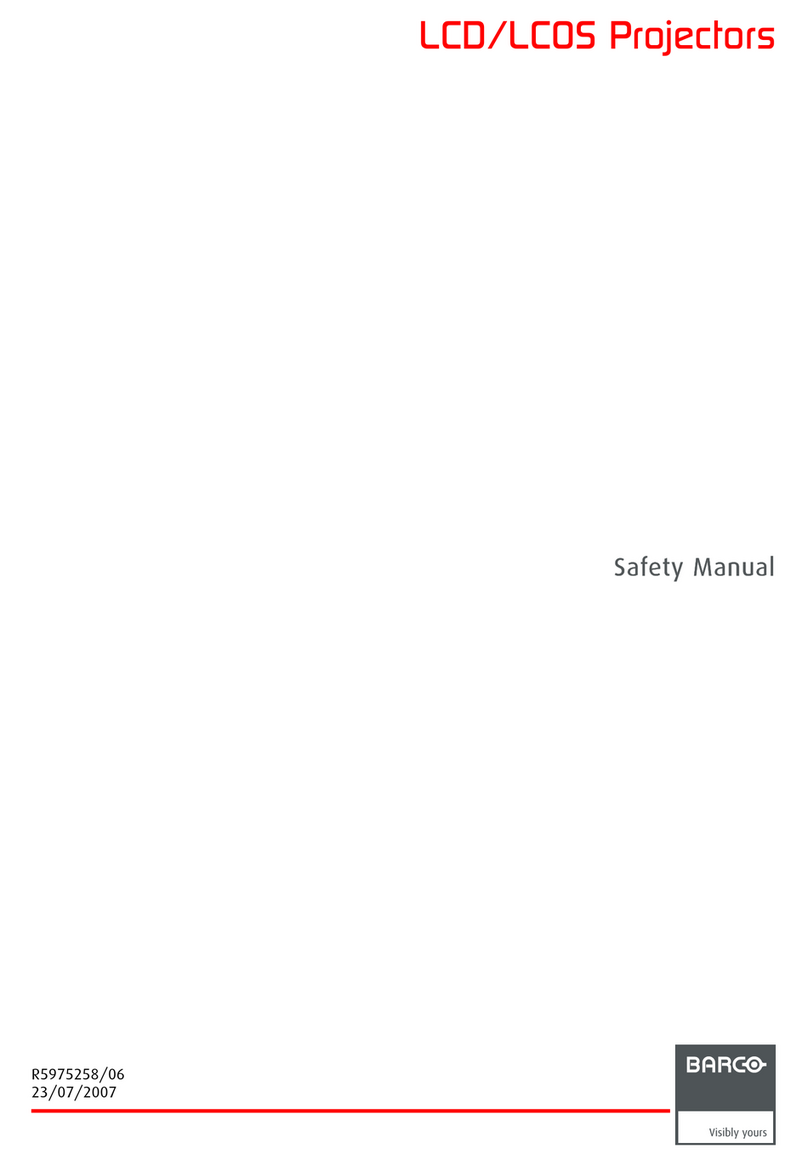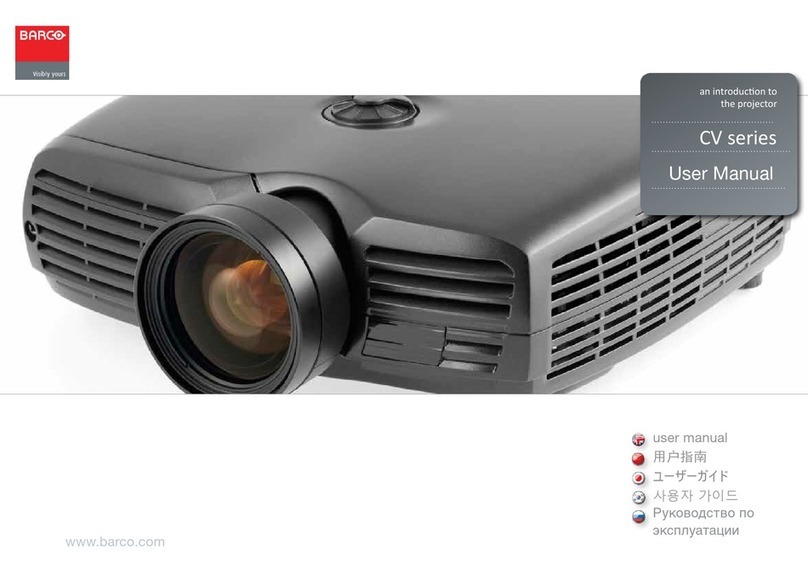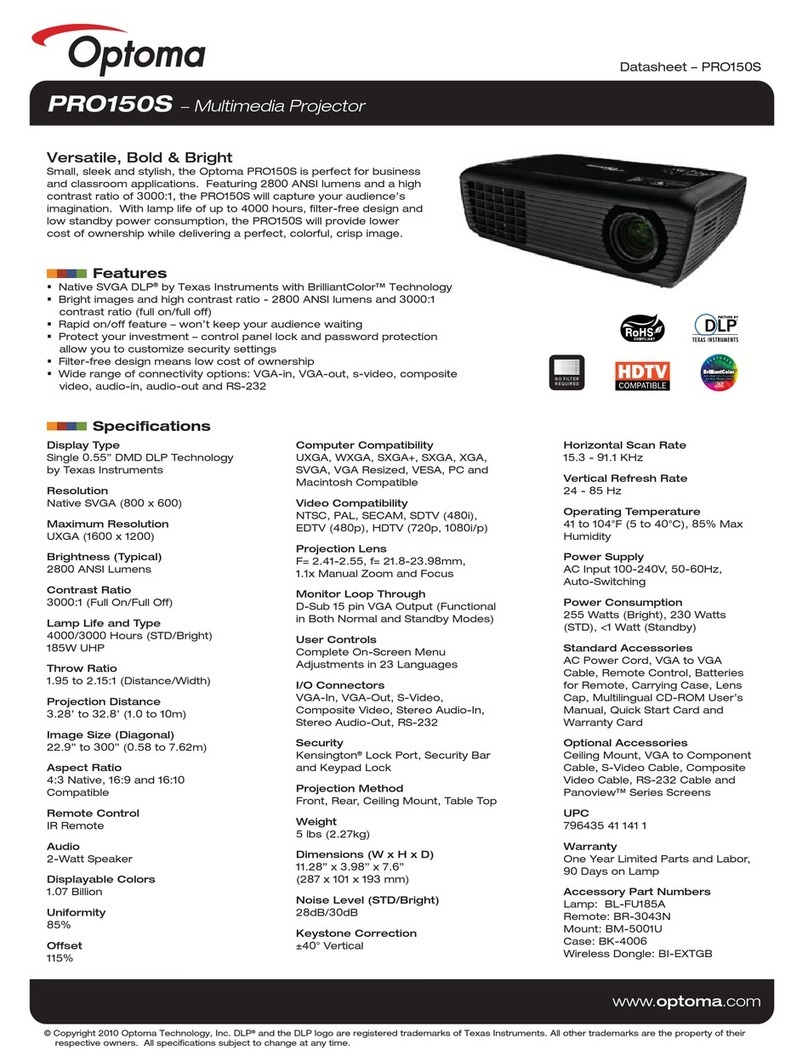
R5906113 UDX 07/07/2017 1
TABLE OF CONTENTS
Table of contents
1.
Safety........................................................................................................................................................... 3
1.1 General considerations.......................................................................................................................................................................4
1.2 Important safety instructions...............................................................................................................................................................6
1.3 Product safety labels.........................................................................................................................................................................10
1.4 High Brightness precautions: HazardDistance (HD).......................................................................................................................11
1.5 HD for fully enclosed projection systems.........................................................................................................................................13
1.6 HD in function of modifying optics....................................................................................................................................................14
2.
Installation preparations ......................................................................................................................... 15
2.1 Installation requirements...................................................................................................................................................................16
2.2 Unpacking the projector....................................................................................................................................................................18
2.3 UDX flight case.................................................................................................................................................................................20
2.4 Initial inspection.................................................................................................................................................................................21
2.5 Projector configurations....................................................................................................................................................................22
2.6 Projector air inlets and outlets ..........................................................................................................................................................26
2.7 Free download of Projector Toolset..................................................................................................................................................27
3.
Physical Installation................................................................................................................................. 29
3.1 Remote control, Battery installation..................................................................................................................................................30
3.2 Using the XLR connector of the RCU...............................................................................................................................................32
3.3 Remote control, protocol setup.........................................................................................................................................................33
3.4 Remote control, on/off button ...........................................................................................................................................................34
3.5 Connecting the projector with the power net....................................................................................................................................35
3.6 Alignment of a table mounted projector............................................................................................................................................36
4.
Lenses & Lens selection ......................................................................................................................... 37
4.1 Available lenses................................................................................................................................................................................38
4.2 Lens selection...................................................................................................................................................................................40
4.3 Lens installation................................................................................................................................................................................41
4.4 Lens removal.....................................................................................................................................................................................43
4.5 Scheimpflug adjustment....................................................................................................................................................................45
5.
Input & Communication........................................................................................................................... 49
5.1 Introduction .......................................................................................................................................................................................50
5.2 Removal of an input board................................................................................................................................................................51
5.3 Installation of an input board or a communication board.................................................................................................................53
5.4 Input source connections..................................................................................................................................................................55
5.5 Communication connections.............................................................................................................................................................61
5.6 Installation of the WiFi module..........................................................................................................................................................63
5.7 Installation of the GSM module.........................................................................................................................................................67
6.
Getting Started ......................................................................................................................................... 69
6.1 Functionality overview.......................................................................................................................................................................70
6.2 Power on projector............................................................................................................................................................................72
6.3 Switching to standby.........................................................................................................................................................................74
6.4 Power off projector............................................................................................................................................................................75
6.5 Using the RCU..................................................................................................................................................................................76
6.6 Projector Address..............................................................................................................................................................................77
6.6.1 Controlling the projector..........................................................................................................................................................78
6.6.2 Displaying and Programming addresses into the RCU..........................................................................................................79
6.7 Quick setup via Direct access...........................................................................................................................................................80
7.
Maintenance.............................................................................................................................................. 83
7.1 Cleaning the lens..............................................................................................................................................................................84
7.2 Cleaning the exterior of the projector...............................................................................................................................................85
7.3 Replacement of the metal dust filters...............................................................................................................................................86
7.4 Replacement of the synthetic air filter ..............................................................................................................................................88
8.
Removal and installation of the projector covers................................................................................. 89
8.1 Removal of the front cover................................................................................................................................................................90
8.2 Removal of the left cover..................................................................................................................................................................91
8.3 Removal of the back cover...............................................................................................................................................................92
8.4 Removal of the small top cover ........................................................................................................................................................93
8.5 Mounting the front cover...................................................................................................................................................................94
8.6 Mounting the left cover .....................................................................................................................................................................95
8.7 Mounting the back cover...................................................................................................................................................................96
8.8 Mounting the small top cover............................................................................................................................................................97
A.
Specifications............................................................................................................................................. 99
A.1
Specifications of the UDX 4K32 .....................................................................................................................................................100
A.2
Specifications of the UDX 4K22 .....................................................................................................................................................101
A.3
Specifications of the UDX W32 ......................................................................................................................................................102
A.4
Specifications of the UDX W22 ......................................................................................................................................................103


